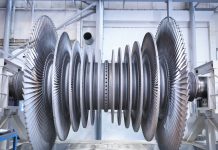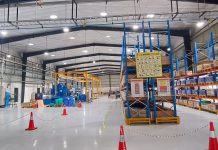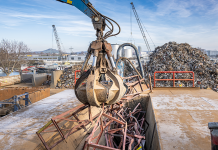Parker meets the need for braided hydraulic hoses with all-round performance capabilities, long fatigue life and low bending radius
It is well known that identifying a hose that can deliver on all fronts has proved challenging. The search is even more complex when trying to find a supplier that can match product excellence with high levels of customer service and engineering support, while demonstrating continuous improvement in R&D, production and testing.
However, the correct selection of the most suitable hose for any specific application starts with several individual prerequisites that must be considered when selecting a braided hydraulic hose, including working pressure and temperature, different level of abrasion resistance, fatigue life, construction integrity, corrosion resistance, chemical compatibility either of innercore and outcover and flexibility.
One of the most important features that many machine builder looks carefully at is the fatigue life. The hose needs to last for a long period as it can serve as a machine USP (unique selling point) for the sales team, while also reflecting well on their brand and market reputation. For the end user, this directly means hose longevity and no needs of frequent hose replacements, meaning no production downtime and corresponding loss of productivity.
Hose life
One of the most important tests in order to have a key indicator of hose life, is the IMPULSE TEST, that involves the pressure cycling of hose reaching up to 133% of the maximum working pressure, with frequencies up to 1.3 HZ, in different fittings configuration, either 90° or 180°.
Typically, an EN or ISO standard defines the minimum performance parameters for a hose. A design engineer seeking a hose, suitable for their project, can view the impulse test parameters associated with these standards and the number of fatigue cycles claimed.

The importance of low bending radius
Very often the choice between one hose or the other also depends by the bending radius, since a machine with a more compact design will yield lower fuel consumption: a factor even more pertinent in the current inflationary cost climate. It goes without saying that while designing a compact machine makes economic and environmental sense, the consequent need to source a hydraulic hose with a low bend radius in order to be able to install it in tight spaces arises.
Even though engineers should consider the hose at the time of system design, it is now possible to source a robust, long-life braided hydraulic hose that also offers low bending radius.
A complete product
In addition to quantifiable fatigue life and tigh bending radius, the abrasion resistance level is something that must be taken in consideration by OEMs when seeking out a hose, since contact between hoses and other machine elements are a constant in many applications.
A manufacturer that is able to offer different outcover compounds with very different level of abrasion resistance compared to the standards, means problem solving. The validation of the crimping fittings solution both coming and being tested by the same source that produces hoses and fittings, provides the final user with a safer and reliable assembly.
Media compatibility remains one of the most important factors to be considered when selecting a hose, as different fluids can now be used, like latest environmentally friendly biodegradable oils.
Finding the right support
Seek out a supplier prepared to develop, manufacture, test and approve a hose (in one size) for a specific application, one that can offer technical support and has global customer. It is crucial to find a supplier that is able to offer a high-level technical support together with the product itself, particularly one that can demonstrate its credential in R&D investments, engineer innovation and worldwide laboratory resources. Finding this type of supplier is another clear benefit in support of hose reliability and safety.
462 EVO, the new all-rounder
With his new 462 EVO hose, which delivers 67% more fatigue life than the previous-generation product thanks largely to state-of-the-art manufacturing processes and quality standards, Parker not only meets all of these business and support criteria, but exceeds some important parameters like lower bending radius. By doing so Parker is also offering a different choice outcover compounds including the ST (Super Tough) cover, which features an ultra-high molecular polyethylene film over the compound to deliver up to 450 times more abrasion resistance than standard rubber covers.
The no-skive 462 EVO, like its predecessor, has a working pressure higher than the standard specification (up to 425 bar/42.5 MPa), while the operating temperature range extends from -40 to +100°C. In addition, the user should know that Parker tests 462 EVO hoses at higher-than-rated working pressures, even though users should never exceed the published maximum working pressure of the hose and/or fitting, for safety and assembly life reason.
With its improved levels of durability and compactness, all those in the construction equipment, material handling or industrial machinery sectors are set to benefit from a genuine all-rounder. The specifications of the 462 EVO braided hydraulic hose now exceed EN857-2SC and ISO 11237 Type 2SC industry standards. Together with Parker 48 series fittings, the new hose is one of the most durable, reliable and adaptable on the market.



